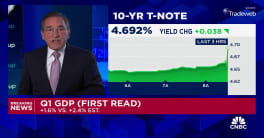The July edition of the Obama Administration's Housing Scorecard was released on Friday and continues to broadcast mixed signals as home prices improved slightly but continued to show strain from foreclosures and distressed mortgages. The Scorecard, issued jointly by the Departments of Treasury and Housing and Urban Development (HUD) is largely a recap of data released by other sources such as the Census Bureau, S&P Case-Schiller, RealtyTrac and the National Association of Realtors. As much of the data reported is quarterly, most of the Scorecard consisted of Quarter One information that we have covered before.
HUD Assistant Secretary Raphael Bostic said, "This month's housing data paint a mixed picture of conditions in the market - despite growing evidence of progress in the broader economy. We're continuing to see a slight improvement in home prices and a decline in mortgage defaults as our foreclosure prevention programs reach more borrowers upstream in the process. But we have much more work to do to help the market recover and to reach the many households there and across the nation who still face trouble."
The Scorecard reports that fewer homeowners fell behind on their mortgages during the month of June. During the month 4.4 percent of prime mortgages were 30+ days delinquent compared to 5.9 percent at the peak in 2010 while the 30+ delinquencies in subprime mortgages were at 32.9 percent compared to 36.6 percent at the peak. Seriously delinquent prime loans were down 22 percent from their peak and subprime loans were 12 percent lower.
As usual, the real meat of the Scorecard is the monthly report on the Making Home Affordable Program (HAMP) which is incorporated in the Scorecard by reference. HAMP, a joint initiative by HUD and Treasury, reported continued improvement in the program's widely criticized conversion rate. Since June 1, 2010 when HAMP changed its procedures and brought increased pressure on its servicers to speed up and improve their administration of the program, 74 percent of homeowners eligible for the program have achieved permanent modifications within 3.5 months of entering the program compared to 5.2 months before the changes. In fact, of the top ten servicers administering the program only two average over 3.5 months and seven are below that figure. One West averages 3.7 months from intake to permanent modification and Chase, which has been the worst performer since the program began, is averaging 4.7 months.
At present there are 23,014 homeowners who have been in trial status for six months or more, a quantum improvement over the 165,543 who were in that position last June, the point at which HAMP revamped its procedures.
Since the previous HAMP report 24,659 homeowners have entered the trial modification program and 31,620 trials modifications have moved into permanent status. Since the program began in April 2009 1,639,382 borrowers have started trial modifications, 763,071 have converted to permanent status. There are now 115,515 trials in process, and 657,044 borrowers with permanent modifications.
These conversions mark a dramatic improvement in the rate since the June 2010 modifications. Of the loans entering the program prior to that date 42 percent, converted to permanent modifications and 1percent are pending processing or decision. Of eligible trials started after 6/1/10, 74 percent converted to permanent modification and 16 percent are pending processing or decision. Among the top ten servicers American Home, GMAC, SPS, and Wells Fargo are performing above 80 percent while Bank of America and Chase have dismal results at 62 and 66 percent respectively.
Permanent modifications are performing well over time. At six months 93 percent of the modifications are still active with 10.5 percent showing a 60 day or more delinquency. At the one-year mark, more that 84 percent of homeowners remain in the program with the 60 day delinquency around 20 percent across all vintages of modifications. Historically, foreclosure prevention programs have had only about a 50 percent success rate. Long term data is limited, but more recent modifications are generally performing much better than those converted early in the program with fewer going delinquent across every timeline. As might be expected, performance is strongly correlated with the size of the payment reduction. At one year more than 91 percent of homeowners who received a payment reduction greater than 50 percent remain in the program, exceeding the performance of those with less substantial reductions.
The report shows a breakdown by servicer of the disposition of troubled loans when the homeowner was not accepted for a HAMP trial. A large number of these borrowers still received assistance or were able to cure their delinquency. Of 1,558,968 homeowners who were not eligible for HAMP assistance, 24.7 percent have brought their loans current and 26.2 percent received an alternative form of modification. Foreclosures were started and/or completed on 18.8 percent and 5.3 percent participated in a short sale or gave a deed in lieu. Action is still pending for 14.7 percent of these homeowners. Small numbers of borrowers are in bankruptcy, paid off their loans, or received payment plans.
Second liens have been a major stumbling block to modification and other foreclosure avoidance initiatives so one year ago HAMP started a Second Lien Modification Program (2MP) and 33,715 homeowners have entered that program, most since last December. The program attempts to fully or partially extinguish second liens or to modify them so as to make the total debt manageable. To date, 2,564 liens have been fully extinguished, 1,279 partially extinguished, and 29,584 modified. The average size of an extinguished loan was $67,371 and partially extinguished debt averaged $6,181.
The Housing Scorecard has started spotlighting activities in one region of the country and this month it is Riverside, California and its surrounding communities, among the hardest-hit areas after the housing downturn. The Housing Scorecard Regional Spotlight features data on the health of the Riverside housing market and impact of efforts to help homeowners at the local level.







